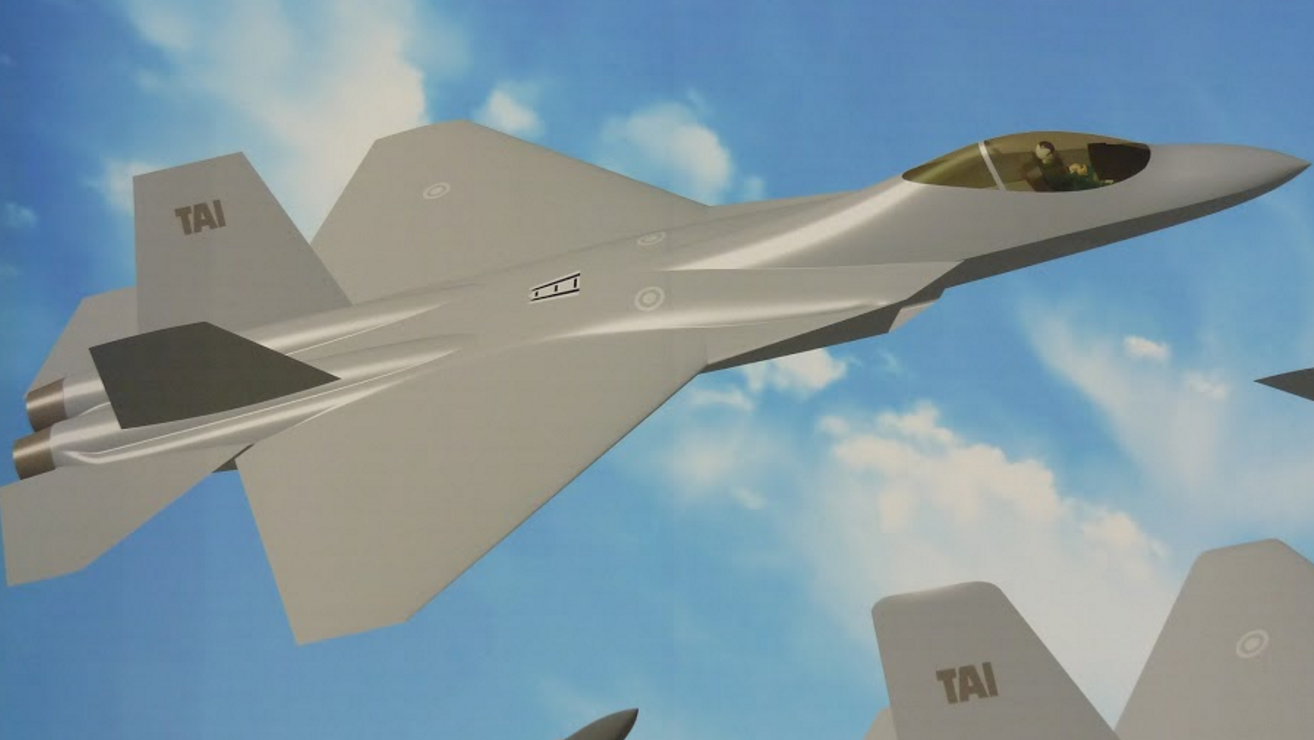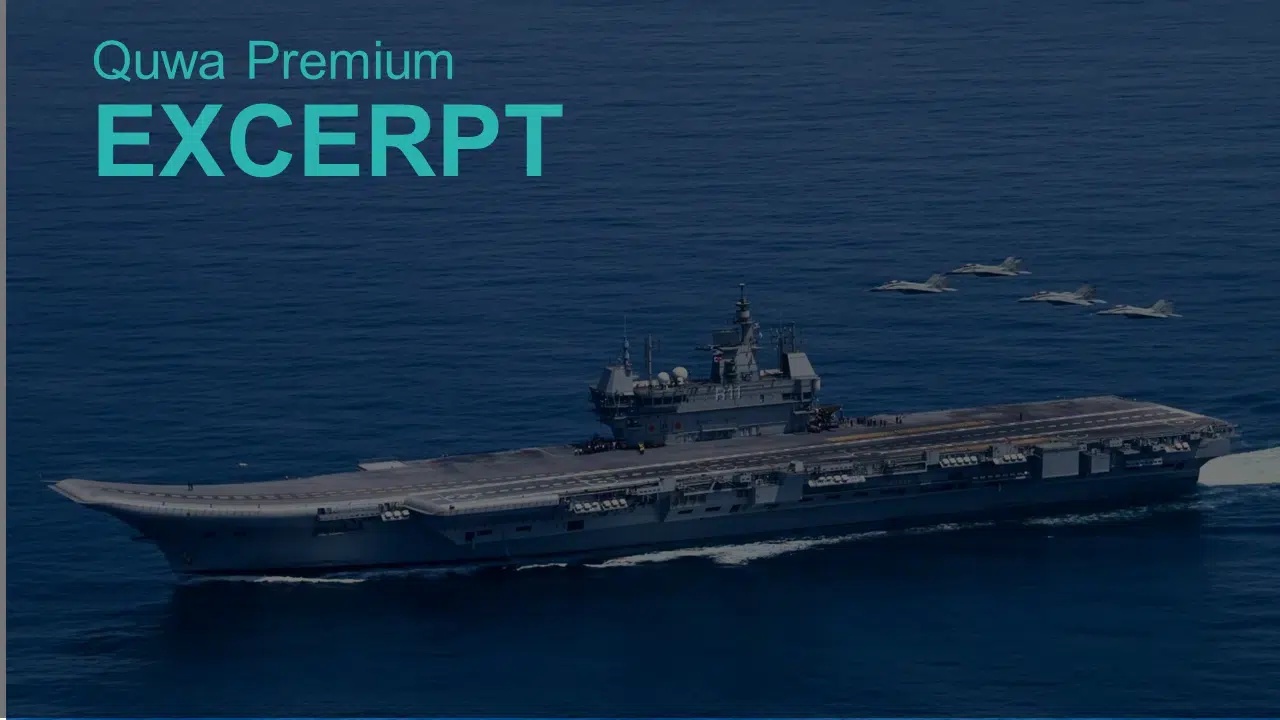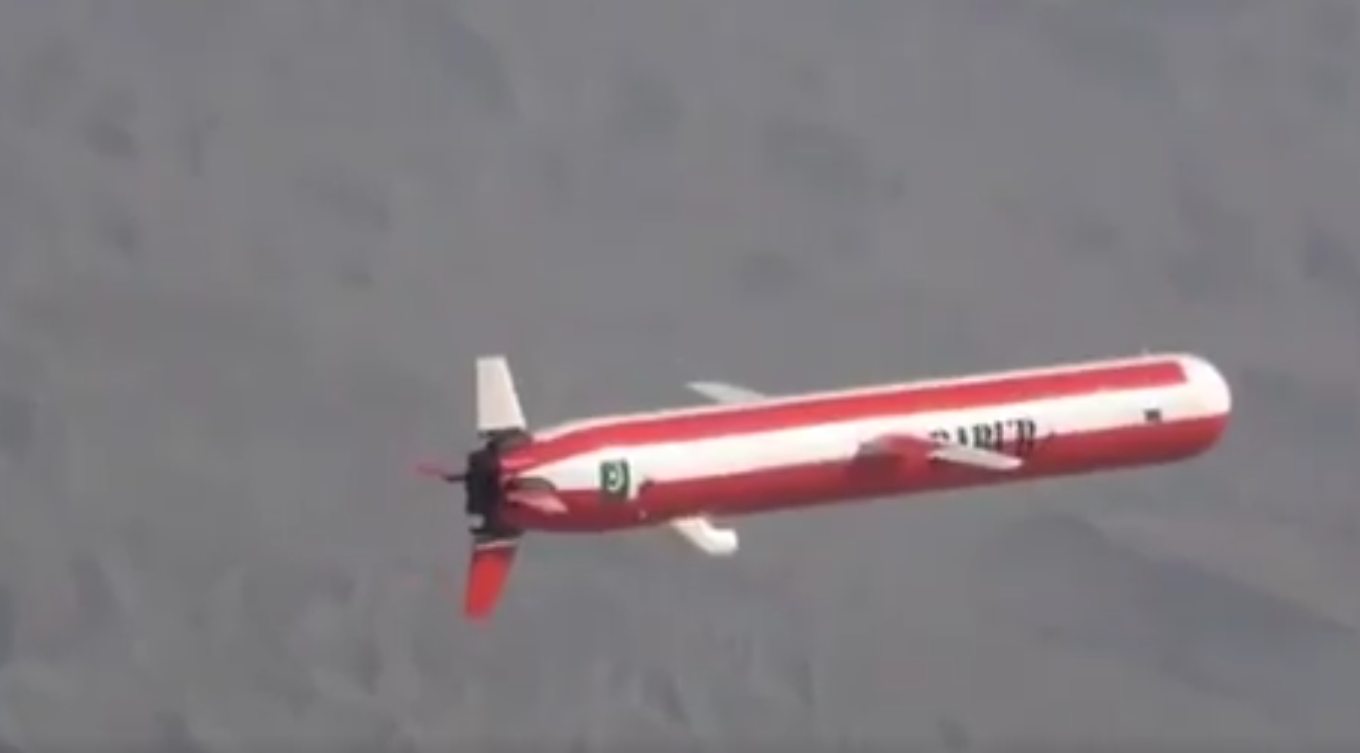2705Views 25Comments

Turkey invited Pakistan to participate in next-gen TFX fighter program
In a recent interview with the state-owned television network PTV (note: it is in Urdu), Pakistan’s Minister of Defence Production (MoDP) Rana Tanveer Hussain revealed that Turkey had invited Pakistan to participate in the development of its next-generation fighter program, the TFX. Specifically, Turkey had requested that Pakistan assists it on the “integration side” of the program.
Comment and Analysis
Pakistan was first linked to the Turkish Aerospace Industries (TAI) TFX program in June when Turkey’s state-owned media outlet Anadolu Agency reported that the two countries were in talks over the TFX.
During the launch ceremony of the Pakistan Navy’s Fleet Tanker, which was designed by STM Turkey and produced at Karachi Shipyard & Engineering Works (KSEW), the Undersecretary of SSM (Turkey’s defense industry department) reportedly said in a speech that the door was open to Pakistan participation in the TAI TFX . The Turkish aviation news outlet Kokpit Aero reported that Pakistan was interested in the TFX.
At this stage, it has now officially been confirmed that an invitation regarding the TFX was extended to Pakistan. However, the extent of Pakistan’s interest in the program is not known, at least officially. That said, Pakistani interest in the program would not be surprising.
In March, the Pakistan Air Force (PAF)’s Chief of Air Staff (CAS) Air Chief Marshal (ACM) Sohail Aman had announced that the PAF had begun to conceptualize its next-generation fighter requirements. In May, ACM Aman elaborated on the initiative and stated that indigenization would be essential to the program.
The specifics have not been disclosed, and one can only speculate exactly what the PAF is intending to do in regards to its next-generation fighter program. However, it is telling that the PAF has not formally or officially committed to the AVIC FC-31, which is surprising considering China’s role in being Pakistan’s principal supplier of high-tech arms, especially combat aircraft (i.e. the JF-17).
To better understand the situation, it may be worth noting exactly what role the next-generation fighter would play in the PAF. From the onset, it seems the next-generation fighter’s function is to replace the PAF’s legacy F-16s, which would be in excess of 40 years old in the 2020s.
Given that the F-16s form the foundation of what the PAF considers its “qualitative edge” or “high-tech” fleet element, it is possible that the PAF is keeping the capability and performance threshold of the next-generation platform on the upper-end of the spectrum.
This is not an indictment of the FC-31, but would explain why the TFX, which will draw significantly from Western expertise and technology, is under consideration. In other words, the PAF is keeping its options open, and will seek the platform that strikes the optimal balance of performance, cost, and accessibility.
Based on Mr. Hussain’s comments, it seems Turkey or TAI had extended an industrial collaboration offer to Pakistan. Should the PAF select the TFX, Pakistan Aeronautical Complex (PAC) would benefit from some technology transfer as well as potentially commercial offsets, which could link PAC into the overall TFX program by providing all users with specific components and parts.
As one might imagine, this is quite different from the stated objective of the JF-17, which was to heavily mitigate the risk of sanctions. Domestic fighter production is not a simple or affordable undertaking. Pakistan had already invested considerably in the JF-17 program, and the inclusion of the next-generation platform does not preclude the JF-17 from further – parallel – development. The parallel development would be the likely course considering that a JF-17 variant will generally remain to be more affordable, accessible and scalable than any next-generation fighter solution.
That said, unlike the current situation with the F-16, the TFX may be accompanied by a comparatively deeper domestic support network, one that not only includes maintenance, repair, and overhaul (MRO), but also a measure of spare parts manufacturing, domestic research and development investment, and armament flexibility (in terms of one’s choice of air-to-air/ground munitions). It is not entirely “sanction-proof”, but it is a substantive improvement in comparison to the F-16.
A less likely scenario – though possible – is that the TFX offer may not require the PAF to buy the aircraft. TAI could simply contract PAC to undertake specific tasks. This would not be the first time PAC engages in work that does not necessarily involve the Pakistani armed forces. In 2013, TAI contracted PAC to produce parts for the Anka unmanned aerial vehicle (UAV), even though Pakistan does not operate the Anka.
In terms of broader impacts, discussions of this nature have essentially positioned Turkey as the leading prospective supplier for Pakistan’s next-generation arms requirements. From the T-129 ATAK dedicated attack helicopter, MILGEM corvette, and now TFX, Turkey could potentially be Pakistan’s top source of ‘Western’ arms. However, Turkey could very well be competing with China in some respects. Finances will be an issue for Pakistan, but Turkish offers or suggestions of transfer-of-technology and commercial offsets could help balance those limitations.



25 Comments
by Shershahsuri
This is a big opportunity for Pakistan and PAC to join a 5th generation venture. PAC can gain valuable R&D besides it can accrue ancillary benefits in the future.
by Hashim Rasheed
Pakistan should take this opportunity with both hands. There are not many countries that are willing to share technical know-how with Pakistan. Get in the program and improve the efficiency and performance of the JF-17 while also working on answering to the future needs of the PAF.
by SP
The reason for the offer could be due to
a) lowering the price of the aircraft
b) getting technical expertise that is not available elsewhere perhaps due to political reasons
c) in the hope of getting PAF to acquire the aircrafts
d) building a long term relationship with PAC which is getting more proefficient with time
e) to reduce its exposure and reliance on the west.
f) reducing Pakistans reliance on China
g) US indirectly helping Pakistan to get even closer to India which is non commital so far
h) using Pakistan to access Chinese technology or know how.
Turkey is a strategic ally of the US which their prime minister restated recently along with Israel, both of which are anti Pakistan and pro India. Therefore Pakistan needs to aware of the dangers of dealing with Turkey. Short term gains could cause long term pains for Pakistan.
by Hassan Sadiq
If Pakistan does join the project, they need to produce the Single Engine Variant that was proposed, without canards, most 5h gen fighters don’t need them.
The Reason is that the TFX will operate with Turkey’s F-35 a single engine aircraft, which Pakistan won’t have or get. Pakistan will most probably go for the J-31 which is dual engine.
There should be full Transfer of Tech between Turkey and Pakistan. Apart from engines, Pakistan could go for one from Russia or China.
Advantages of Single Engine such as Costs, Reliability and practicality are too much for PAF to ignore, especially considering the F-16 as our previous frontline jet.
It could also give hope for Pakistan to export the jet to countries who may find the Dual engine TFX to expensive.
J-31 and TFX best counter to FGFA and AMCA.
by Navid Butt
Provide them with integration know how, form a JV company to produce engine,fcs and avionics.Turkey is neither rich nor technologically as advanced as generally thought of in Pakistan.Both countries must design their own airframes,having common engine, radar and avionics with Pakistan having their design based on JF-17.
by Muhammad Ali
Pakistan Must join its good project for both brother countries !
by MT
Turkey foreign minister in India supported Indian NSG entry as they did support Indian MTCR membership
by Saleem hatoum
Bilal, you are reading too much is to what Minister Tanveer said.
by Navid Butt
Indian Jealousy………..as always.
by Alex Retiman
I don’t think this is a good idea. Pakistan should only join Turkish program if China is also involved in the project. This is to ensure there are no financial issues and there is no blackmail by the Turks in the future. Also, I think this is a US plot to prevent Pakistan from going too deep in the Chinese camp. Pakistan needs to be very careful.
by Muhammad Khurram Bhatti
TFX will at least be delayed for long if not cancelled. It can never be ready by 2020 anyways. I still think for 20s we need FC-31 but can participate in TFX from a technical participation perspective as you mentioned.
by jamshed_kharian_pak
Yak na shood doo shood Islamic Republic of Pakistan must diversify ECO countries must develop Eco-military wing
by M. I. Aslam
This piece raises few questions like
1. If offer accepted, what would be future of Pak-China military relationship?
2. Will there be any effects on JF17 project?
3. Timeline for Turkish fighter? (I guess it’s not even on drawing board right now)
4. Interim options for Pakistan till that time? Will Chinese FGFA remain available in this situation?
5. What PAC can offer to TAI in terms of expertise as we ourselves are novice in this field?
6. And lastly is this project of indigenous FGFA viable speaking purely in financial terms?
by Bilal Khan - Quwa
My understanding of the situation (I spoke to some people) is that this would be more of a JSF-style partnership. In other words, Pakistan’s role – at the end of the day – would be to help with scale (i.e. more units) and some funding, and in exchange, it would get a fighter with reasonably good technology transfer and possibly even commercial offsets. Note, the tech-transfer wouldn’t be like the one we got with the JF-17; with the TFX, I (opinion) expect it would just be a few components, but PAC’s work would feed back into the wider TFX supply chain. This is basically how many – if not most – of the JSF’s partners “helped” with the F-35’s development, and this is what they got at the end of it. It would be wrong to suggest we will locally produce the airframe or do something major.
As for interim options. Ideally, I imagine the PAF would love to pick up something like the Su-35 or Typhoon, but the country is – sadly – not that financially strong. The TFX’s later due date basically gives us more time to save up funds for several TFX squadrons (in the 2030s). Until then, we should probably expect continued development of the JF-17, and in turn, a new set of blocks to help phase out the older Block-I/II units.
by Mazhar
Turks never blackmailed Pakistan. Your idea about China seems correct
by MT
Admin is dreaming if he believes that a country which has no prior experience of developing a fighter aircraft will come up with 5th gen technology
I can say Turkey can dream on to 2035 before it gets this plane
by MT
Turks is getting away from US & EU–So i doubt it they can even make the aircframe of TF-X by 2030
Pak is not even on global aeronautical industrial map
by Bilal Khan - Quwa
Let me break your statement down a bit, to show you and everyone here how ridiculous it is:
“Admin is dreaming” – Okay, so here is the argument.
“If he believes…” – …and here is the “proof” of me dreaming. The proof starts with “IF” – i.e. a speculative term used to introduce a hypothetical scenario.
And the rest is complete nonsense because you’re literally arguing against a hypothetical me that exists in your mind.
MT – this is your problem. You have repeatedly made grand and conclusive conclusions based on speculation, and many times, very bad and biased speculation. You’ve approached most topics from this angle, and for some bizarre reason, you pulled me for over a point I never even made. I have yet to make a judgment call on the TFX, its timelines, its capabilities, or much beyond the known defense industry information.
by Muhammad Khurram Bhatti
To his defense Turkey is contributing to the JSF program. If I am not mistaken a portion of stealthy fuselage is developed in Turkey fir JSF.
by MT
Lol. Those all are american companies building stuffs in turkey as part of offset program for bill$ eequipments turks buy from usa
by Bilal Khan - Quwa
Since when was Kale Aero an American company?
by underocntr
I’m Turkish and it is good people are discussing rather than just accept the offer just because its offered by a brother country. If should Pakistan join or not? Its something you people must decide. But we would love to see Pakistani engineers in our country :).
by underocntr
Dude we are producing our F-16’s in Turkey under licence. And we are developing weapon system with our engineers. TAI TFX is not dream and its happening in Ankara. Some of our aerospace industries already created a prototype of some modules of the jet.
by MT
Mere production of Composite is not an achievement.
I havent heard of Turkey producing any stealthy materials. Chinese lack stealth coating and stealth polymer composite in their 5h gen fighter plane & thye are many decade more experienced in material science over turks
by lim ex
Thanks Bro! This offer means much to us, and personally I’m grateful to Turkey and People of Turkey for brotherly cooperation. Pakistan’s interest in fifth generation fighters is obvious, however, whether Pakistan is able to get on this program or not depends on several factors. I’m sure, no one in Pakistan likes be a parasite. PAF will assess our role, what we can contribute to program in terms of technology and financing and so on. If our contribution, especially in technology, turns out to be not enough, I think PAF will simply choose to buy final product instead.
Love and Respect from Pakistan!